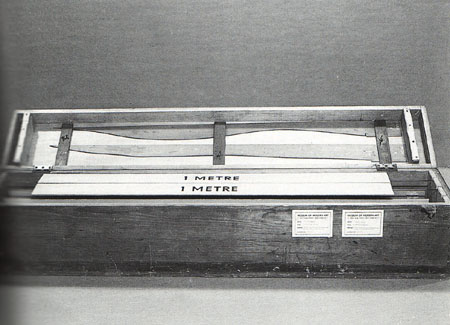

When describing this work, Duchamp wrote that he used a measurement system which, like Poincaré's, was a qualitative system taking the approximate relation among events as the measure, instead of the quantitative method of the meter. He wrote:
... one meter was changed from a straight line to a curved line without actually losing its identity (as) the meter, and yet casting a pataphysical doubt on the concept of a straight line as being the shortest route from one point to another ...To quote a website I found on the subject,
Duchamp's idea seems similar to that of Poincaré, demonstrating that the curved space of non-Euclidean geometry, and the different convention of straight lines in Euclidean geometry, yield two worlds that are connected and interchangeable in the mind, given familiarity with the rules of both systems and the right geometric method for moving from one system to the other
Artists have created patterns on plane surfaces for millennia, and on spheres for hundreds of years. But it was only recently that the hyperbolic plane has been utilized for artistic purposes, though mathematicians have been drawing hyperbolic patterns for more than 100 years. M. C. Escher was most likely the first artist to make use of all three of the classical geometries: Euclidean, spherical, and hyperbolic geometry. In fact he realized his angels and devils pattern in each of these geometries. Below, I will trace some of the history of hyperbolic art starting with Escher's hyperbolic inspiration from a figure by the mathematician H. S. M. Coxeter. ...Coxeter and Escher corresponded after first meeting at the 1954 International Congress of Mathematicians. In 1958 Coxeter sent Escher a letter containing a reprint of Coxeter's paper Crystal Symmetry and Its Generalizations. Figure 7 of that paper contained a triangle tessellation of the Poincaré disk model of the hyperbolic plane.
Escher wrote back to Coxeter that this figure "gave me quite a shock," since it showed him how to design a pattern in which the motifs become ever smaller toward a limiting circle.